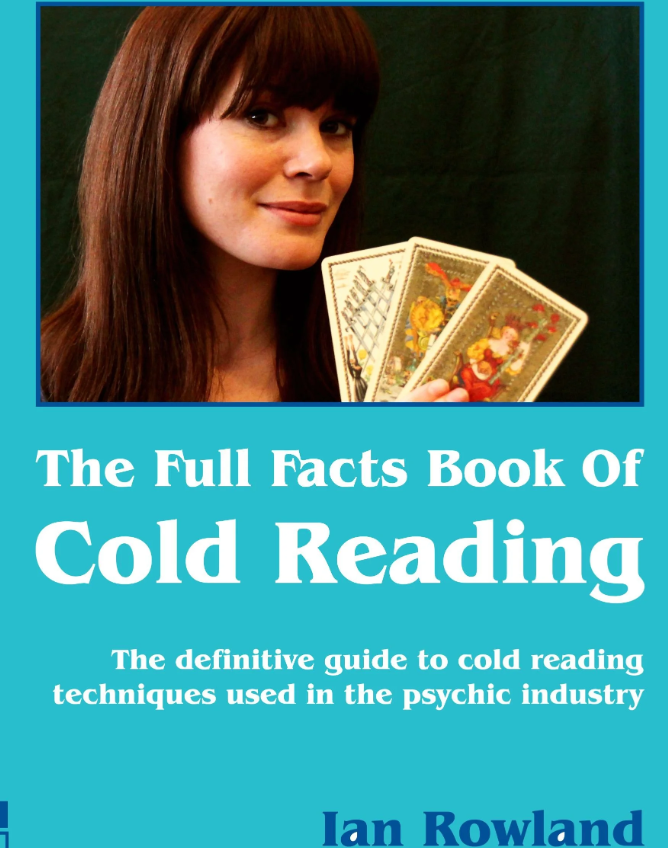Cold Reading Examples: How the Illusion Works
Cold Reading Examples: How the Illusion Works
Cold reading is one of the most fascinating communication skills ever developed. It creates the impression that someone knows hidden details about you, even though they’ve had no prior information. But how does it work in practice? The easiest way to understand is by looking at real cold reading examples.
In this article, we’ll explore some of the most common cold reading examples, why they work, and what they reveal about human psychology.
Why Study Cold Reading Examples?
If you’ve ever watched a psychic, mentalist, or fortune teller, you’ve seen cold reading in action. By studying cold reading examples, you learn how language, observation, and psychology combine to create powerful illusions.
There are two main benefits:
Protection – You’ll be less likely to be fooled by those who misuse these methods.
Practical use – You can apply elements of cold reading to build rapport, connect with others, or entertain.
Understanding these cold reading examples shows how universal human desires—such as the need to feel understood—make the technique so effective.
Classic Cold Reading Examples
Here are some of the most widely used cold reading examples you’ll encounter:
1. The Barnum Statement
“You have a strong need for others to respect you, but you’re also your own harshest critic.”
This is one of the most common cold reading examples because it’s flattering, vague, and true for most people.
2. The Rainbow Ruse
“You’re outgoing and sociable, but sometimes you prefer to keep to yourself.”
This works by covering both ends of a personality spectrum, making it one of the cleverer cold reading examples.
3. The Jacques Statement
“You don’t always get the credit you deserve for your efforts.”
Most people resonate with this, which is why it remains one of the strongest cold reading examples.
4. Shotgunning
“I’m sensing a connection with the name John… or maybe James… someone with a J.”
This scattershot approach is a staple among psychics working with groups and is a textbook cold reading example.
5. Fishing
“You’ve been thinking about changes in your career, haven’t you?”
This is one of the simplest cold reading examples. Even if it doesn’t land, you can adapt based on the reply.
6. Observation-Based Statements
“You’re the kind of person who takes pride in your appearance.”
This is among the most obvious cold reading examples, since it’s based on visible cues like grooming or clothing.
Why Cold Reading Examples Work
Looking at these cold reading examples, you might think, “But that could apply to anyone!”—and that’s the point.
Here’s why they work:
The Barnum Effect – People interpret vague statements as highly personal.
Confirmation Bias – People remember “hits” and forget “misses.”
Desire for Connection – People want the statements to feel true.
Social Feedback – Skilled readers adjust based on reactions.
These psychological mechanisms explain why the same cold reading examples can impress people over and over again.
Practising with Cold Reading Examples
If you want to practise, start with these cold reading examples in casual conversations. Notice how people respond. Do they nod? Do they offer extra details? Use this feedback to refine your delivery.
Tips for practising:
Keep statements broad, then narrow in as you gain feedback.
Watch for body language that confirms or denies what you’ve said.
Use gentle phrasing like “I sense” or “You sometimes…” to stay flexible.
Practising these cold reading examples will sharpen your ability to connect quickly with others.
Ethical Considerations
It’s important to note that cold reading examples are not meant to trick or exploit. Used responsibly, they can entertain, build rapport, and demonstrate communication skills.
The danger comes when people disguise cold reading as supernatural power and take advantage of others. Always approach cold reading examples with integrity and transparency.
Everyday Applications of Cold Reading Examples
Beyond the stage or psychic booth, you’ll find cold reading examples in everyday life. Politicians use them in speeches, salespeople use them to gain trust, and even friends use them unconsciously in conversation.
For instance, a manager might say, “I know you’ve been working hard, but I also know you feel your efforts aren’t always recognised.” That’s one of the classic cold reading examples—and it builds rapport instantly.
By studying cold reading examples, you unlock the psychology behind one of the world’s most intriguing communication skills. These examples show how simple words, paired with observation and feedback, can create the powerful illusion of insight.
The next time you hear a statement that feels uncannily accurate, ask yourself: could this be one of the many cold reading examples at work? Chances are, the answer is yes.





